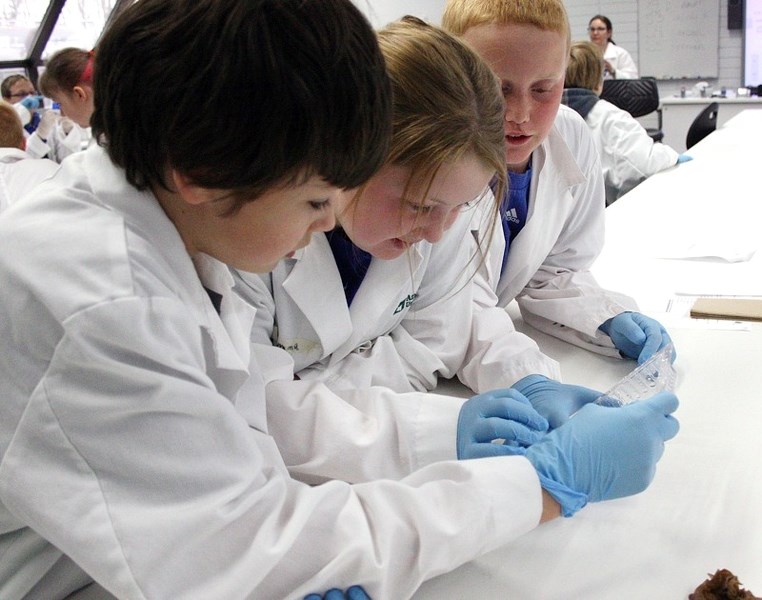Some students from Landing Trail Intermediate School donned white lab coats and pulled out their investigative skills last Wednesday.
The French immersion students in the Grade 6-F class stopped by Athabasca University (AU) where they attempted to solve a “crime” by learning how to extract DNA from fingerprints and compare samples at AU’s DNA forensics lab.
The activity was one of Science Outreach’s many initiatives to promote science in Athabasca and also tied in with the evidence and investigation unit the students are studying.
Science Outreach volunteer and university microbiology course instructor Carmen Allen presented students with a crime and taught them lab techniques to find the culprit using DNA from a piece of chewing gum.
Allen has a Masters degree in Biology and has taught at AU since 2011. The activity was the first time she did this demonstration with students who weren’t in her microbiology labs, so some content was slightly modified to fit the age group.
Using an artificial DNA simulation kit, the students first learned how to cut the DNA into smaller pieces by transferring it to an enzyme mixture in a test tube using an eye dropper.
The tubes were then incubated to 37 degrees Celsius for 45 minutes before being placed on a gel sheet and undergoing gel electrophoresis – a technique to separate DNA into particles using an electricity.
The gel was placed in an electrophoresis chamber filled with saline solution, and then the chamber was hooked to electric jacks to allow a current to pass through.
The gel was then stained blue and sat under running water for an hour.
In the meantime, the students took a drive 25 kilometres south of Athabasca for a quick tour of AU’s geophysical observatory (AUGO). Located between Long Lake and Narrow Lake, the AUGO monitors the aurora borealis and other earth-sky phenomenon.
Upon their return, they removed the gel and observe the bands of DNA that appeared on the gel.
The final step compared the DNA bands from the crime scene with the DNA from five suspects.
The crowd of 18 students eagerly hovered over their gels before proclaiming their guilty verdict.
Despite some challenges the kids had extracting the DNA, that hadn’t deterred some from exclaiming a future career in the field.



